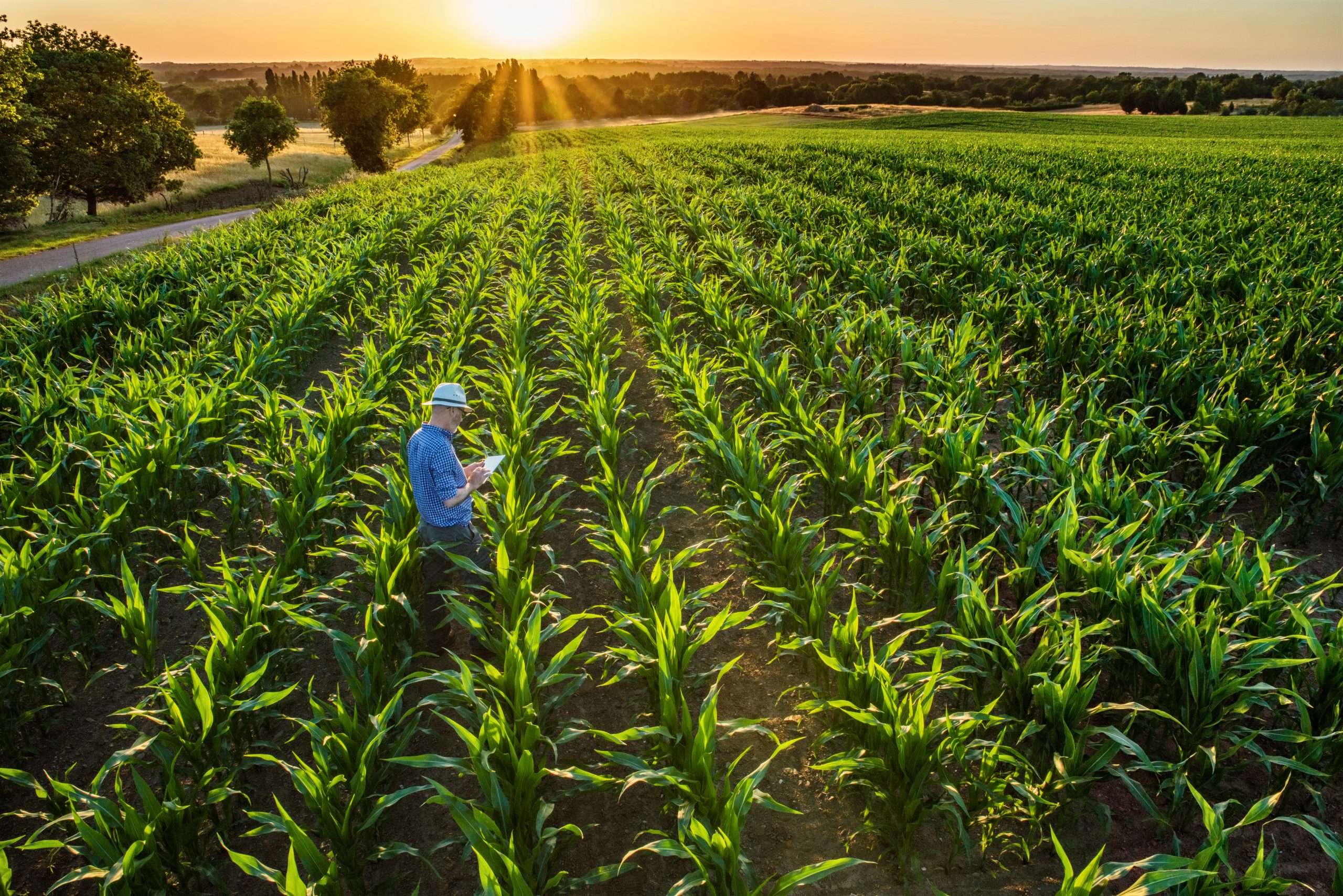Agriculture science refers to the processes of cultivating desirable plants and breeding and raising livestock for commercial purposes. The practice of agriculture is usually referred to as farming. The scientists, laboratory technicians, geneticists, technologists and inventors are typically described as being involved in agriculture.
Raising and Breeding of Livestock
One of the tenets of agriculture science is the breeding and raising of livestock. This refers to animals that are raised for human consumption. For example, chickens, turkeys, farmed fish, cows for beef, calves for veal and pigs for pork are part of the livestock system. Animals that are hunted for food, such as wild turkeys or deer, are not included as a part of agriculture science.
Production of Plants for Food
Much of agriculture science is devoted to the production of plants as a source of human nutrition. This includes grasses, grains, fruits, roots, leaves, berries, plant seeds and vegetables. Some of the grasses and grains used for human food are wheat, oats and barley. Agricultural scientists may work on developing plants that can withstand dryer or wetter climate conditions. They may also work on changing the genes of plants to make them resistant to fungi, insects or worms. Other agriculture scientists work on increasing the productivity of plants, such as bushes that bear more or larger berries. Agriculture scientists might also focus on the flavor, color or texture of plants for human consumption, such as making genes for sweeter apples or cherries that are more tart.

Production of Fiber
According to Science Daily, agriculture science also includes the production of fiber. This encompasses plant fibers, such as hemp, flax, linen and cotton. It also includes animal fibers, such as silk, mohair, wool, llama, cashmere, alpaca, yak and bison. Fibers that are gathered from the wild, rather than fibers grown purposefully, are not included in agricultural science. For example, qiviut is the fiber of the musk ox, and Inuit and Native Alaskan people follow the herds and collect these fibers in the springtime when the animals shed their winter coats.
Related Resource: 20 Best Affordable Bachelor’s in Agriculture Science
Production of Feed for Animals
Agriculture science also includes the production of feed for animals. The feed is generally for the animals that are also being raised for food. For example, much of the corn produced in the United States is used in feed. Some other feed crops include hay, pasture grass and silage. Some food grown for people has byproducts that are turned into feed or animals. For example, the husks of pineapple and the roots and leaves of sugar beets are turned into animal feed. Brewer’s grains are also used for animal feed. Surplus food grown for human production may also be given to animals.
Agriculture science is what allows for modern food production. It also encompasses many occupations, from the geneticists who change the genome of plants to make them resistant to pests or diseases to the people who drive the tractors that plant the seeds into the ground and the field workers who harvest the fruits and vegetables by hand, many people are involved in agriculture. Understanding what is agriculture science is gives a person a new perspective on what it takes to get food from the field to the table.
Other Rankings of Interest:
40 Best Affordable One-Year Accelerated Master’s Degree Programs
50 Most Affordable Colleges with the Best Return
25 Best Affordable Online Mathematics/ Statistics Education Degree Programs (Master’s)
25 Most Affordable Master’s of Statistics Degrees
20 Best Affordable Online Colleges for Computer Networking Degree
10 Most Affordable Law Schools in the United States
15 Best Affordable Animation Degree Programs (Bachelor’s)
40 Best Affordable Pre-Med Degree Programs (Bachelor’s)
15 Best Affordable Film Studies Degree Programs (Bachelor’s)
 The Best Colleges
The Best Colleges The Lowest Costs
The Lowest Costs The Highest Returns
The Highest Returns